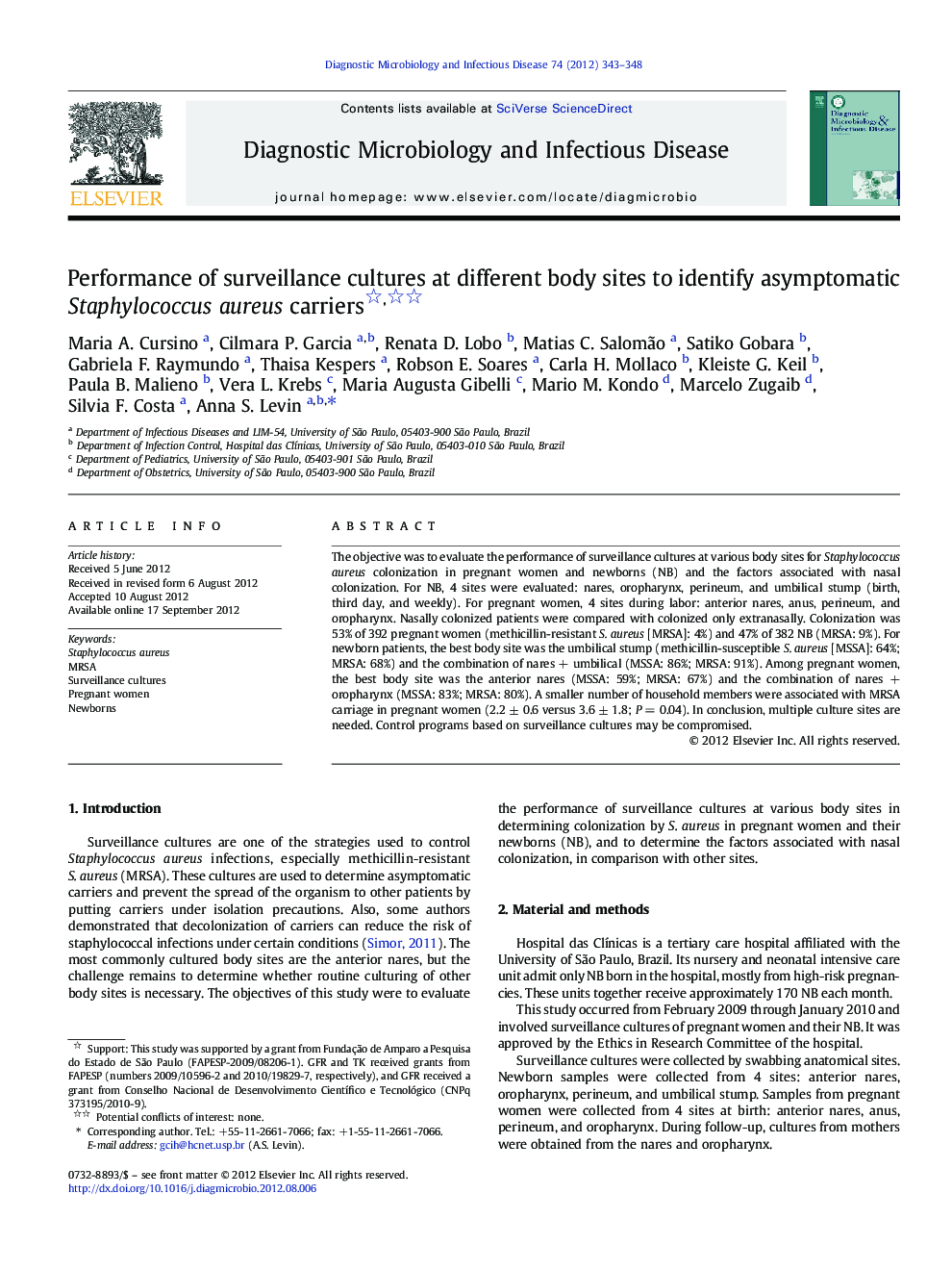| Article ID | Journal | Published Year | Pages | File Type |
|---|---|---|---|---|
| 6116340 | Diagnostic Microbiology and Infectious Disease | 2012 | 6 Pages |
Abstract
The objective was to evaluate the performance of surveillance cultures at various body sites for Staphylococcus aureus colonization in pregnant women and newborns (NB) and the factors associated with nasal colonization. For NB, 4 sites were evaluated: nares, oropharynx, perineum, and umbilical stump (birth, third day, and weekly). For pregnant women, 4 sites during labor: anterior nares, anus, perineum, and oropharynx. Nasally colonized patients were compared with colonized only extranasally. Colonization was 53% of 392 pregnant women (methicillin-resistant S. aureus [MRSA]: 4%) and 47% of 382 NB (MRSA: 9%). For newborn patients, the best body site was the umbilical stump (methicillin-susceptible S. aureus [MSSA]: 64%; MRSA: 68%) and the combination of nares + umbilical (MSSA: 86%; MRSA: 91%). Among pregnant women, the best body site was the anterior nares (MSSA: 59%; MRSA: 67%) and the combination of nares + oropharynx (MSSA: 83%; MRSA: 80%). A smaller number of household members were associated with MRSA carriage in pregnant women (2.2 ± 0.6 versus 3.6 ± 1.8; P = 0.04). In conclusion, multiple culture sites are needed. Control programs based on surveillance cultures may be compromised.
Related Topics
Life Sciences
Immunology and Microbiology
Applied Microbiology and Biotechnology
Authors
Maria A. Cursino, Cilmara P. Garcia, Renata D. Lobo, Matias C. Salomão, Satiko Gobara, Gabriela F. Raymundo, Thaisa Kespers, Robson E. Soares, Carla H. Mollaco, Kleiste G. Keil, Paula B. Malieno, Vera L. Krebs, Maria Augusta Gibelli, Mario M. Kondo,
